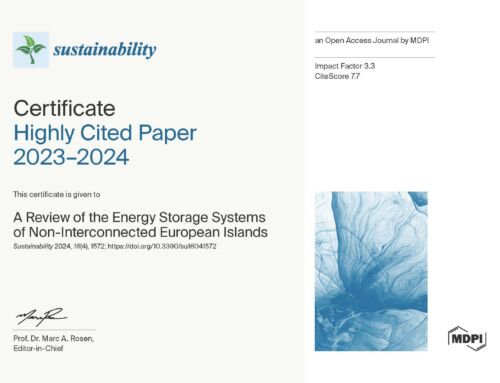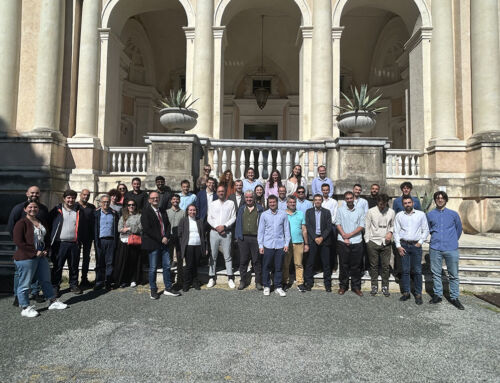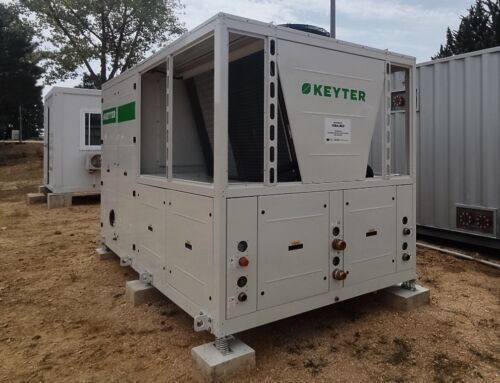On May 7, 2025, the new fast-response energy storage system was successfully integrated into the electrical microgrid of the Renewable Energy Development Center (Demo#2 – CEDER-CIEMAT). The intervention involved not only the electrical connection of the container to the facility’s transformer substation, but also the successful execution of the initial charging and discharging tests of the energy storage systems.
The integration operations were carried out by technical personnel from the company ELINSA, under the supervision and coordination of CIEMAT’s Power Electronics Department, and with the close collaboration of the center’s technical team. The commissioning process extended over several days, during which minor technical issues—typical of the deployment of prototype systems—were progressively identified and resolved. This iterative tuning phase was essential to ensure the proper configuration and stable operation of the storage units within the microgrid.
The installed container houses two advanced energy storage prototypes designed for fast-response applications: a flywheel and a bank of supercapacitors. Both systems enable highly efficient management of power transients and grid fluctuations, thereby enhancing the stability and quality of the microgrid’s power supply.
| Specification | Bank of Supercapacitors | Flywheel |
| Max. Power | 120 kW | 25 kW |
| Max Stored Energy | 0.768 kWh | 4.22 kWh |
| Number of Cells | 256 | N/A |
| Voltage (State of Charge) | 345V – 691V | 400 V |
| Support Type | Cabinet | Magnetic levitation |
| Rotary Mass | N/A | Giant cylindrical |
| Energy Transformation Type | Direct | Mechanical to electrical |
| Maximum Speed | N/A | 13.000 rpm |
Table 1. Specifications for fast-response energy storage systems.
Additionally, a comprehensive series of charge and discharge tests were conducted on the supercapacitor bank to evaluate its dynamic response and confirm its operational performance. These tests involved multiple progressive charge/discharge cycles, progressively increasing the power until the system reached its rated capacity of 120 kW. The results of these tests are presented in the attached figure, where negative power values indicate energy being discharged to the grid, and positive values represent energy being stored.
As shown, the upper panel displays a complete overview of all tests performed, while the lower panels highlight two particularly relevant test sequences. In one of these, a constant discharge was sustained over several seconds, demonstrating the system’s capability to deliver stable power over short durations. In the other, the supercapacitor bank was charged at its nominal power level for a very brief period, validating its ability to absorb high-power input instantaneously. These results collectively confirm the suitability of the system for rapid response applications in the context of microgrid stability and power quality enhancement.

Image 1. Supercapacitor bank charge and discharge test graphs
The purpose of this hybrid energy storage system extends beyond the mere provision of power for peak shaving. It is also engineered to perform critical grid-stabilizing functions, such as frequency and voltage regulation in response to sudden disturbances. To simulate such scenarios, an auxiliary power electronics device—the decoupling converter—will be employed. This unit, successfully installed several months ago and currently in full operation, is specifically designed to emulate real-world grid fault conditions.
The decoupling converter is capable of introducing controlled disturbances into the electrical network, mimicking events such as substation disconnections, distribution line interruptions, and other potential anomalies. By precisely modulating frequency and voltage parameters, it creates deliberate imbalances that serve to evaluate the dynamic response capabilities of the storage system.
Within this experimental framework, the fast-response storage prototypes—the flywheel and the supercapacitor bank—will function as compensating elements, either injecting or absorbing energy to restore system stability in extremely short timeframes. This coordinated interaction significantly enhances the security, resilience, and operational reliability of the CEDER-CIEMAT microgrid.
 Image 2. Photographs of the installation and connection process of the prototypes.
Image 2. Photographs of the installation and connection process of the prototypes.
These functional and validation tests will continue to be carried out over the coming weeks within the framework of the European project SINNOGENES. In parallel, energy management strategies specifically designed to optimize the system’s performance over short-duration operational periods will also be implemented.







